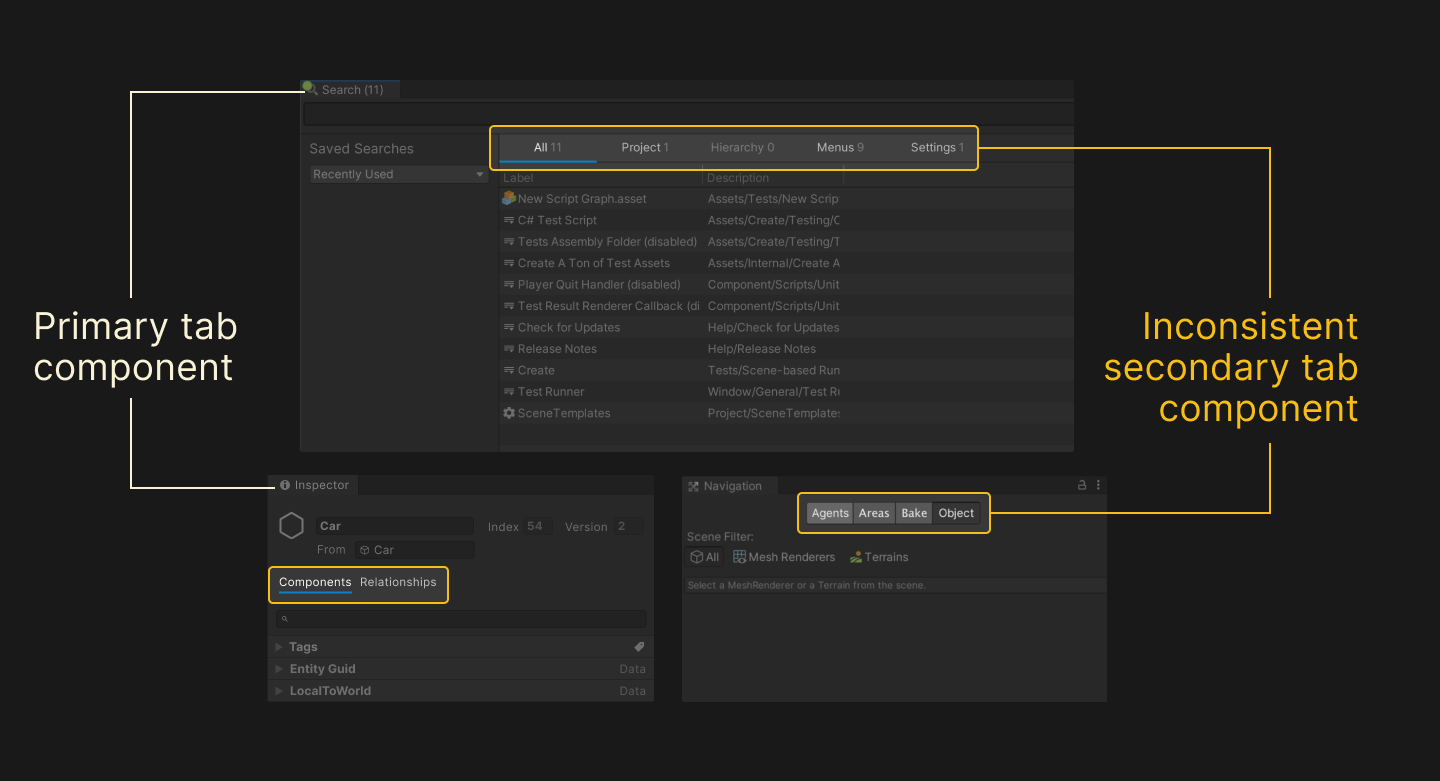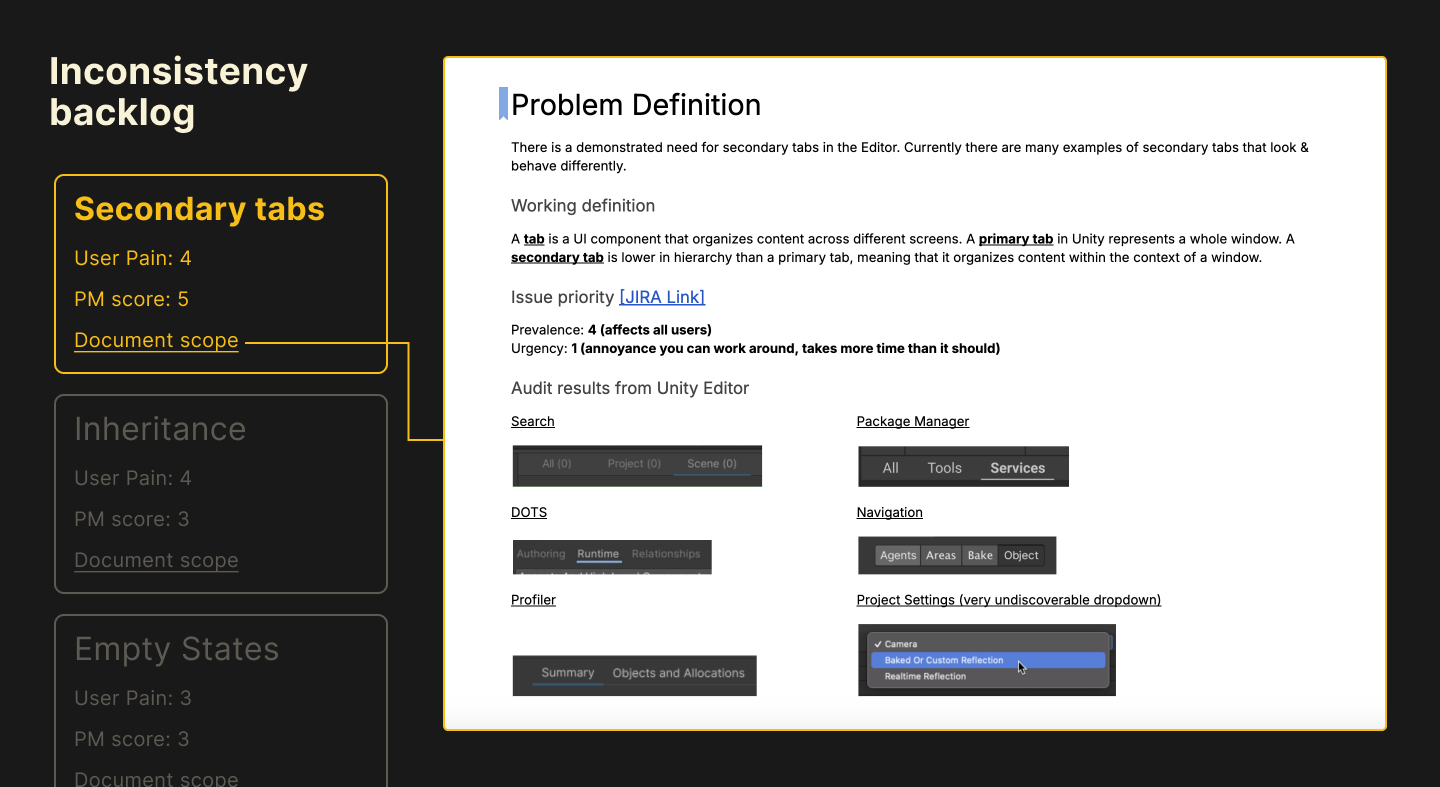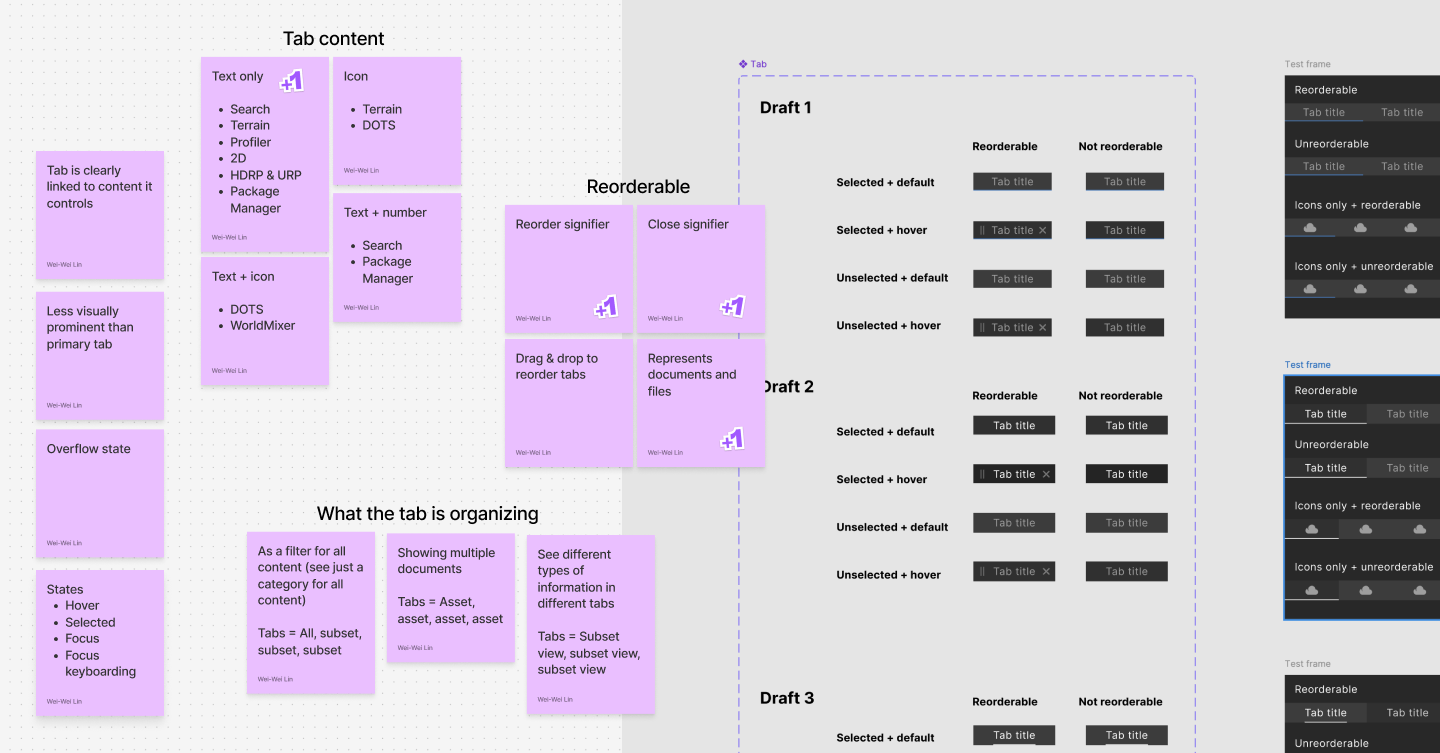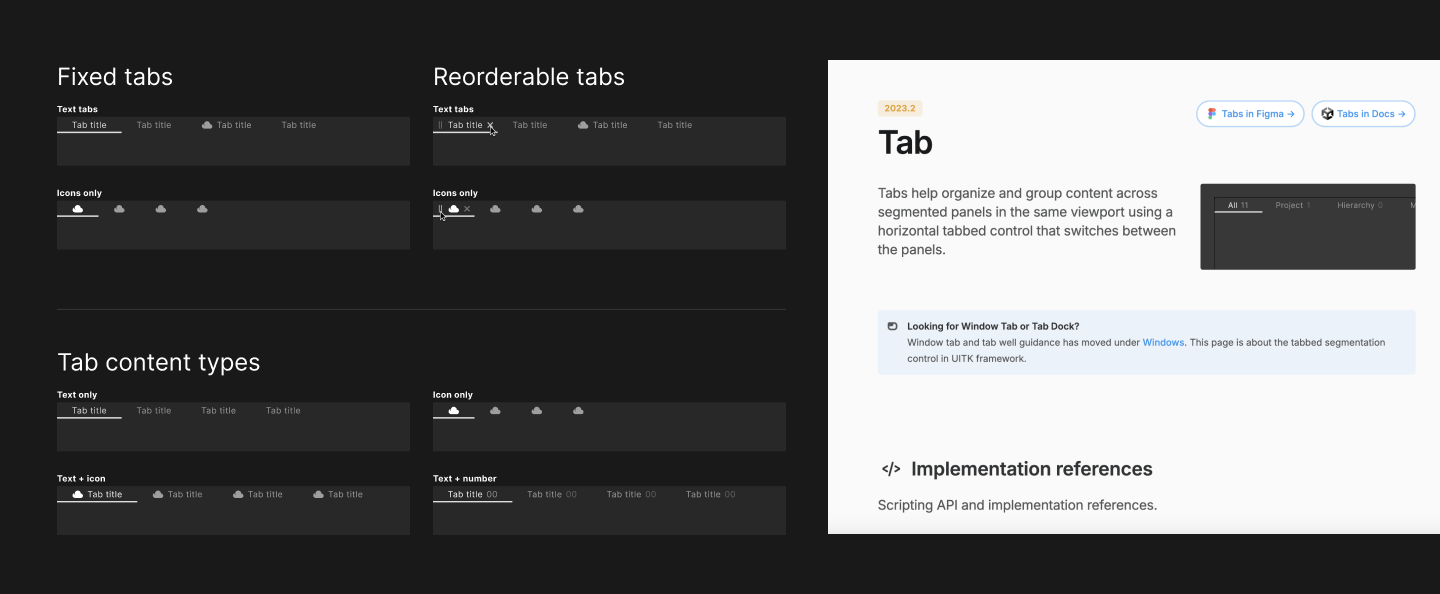Bringing unity to Unity's design culture.
Project
At Unity, I worked on creating a design system for the Unity Editor, the flagship product. The Editor was successful, but an innovation-first approach had led to a fractured and inconsistent user experience. Users described it as “walking through syrup”, and core features felt “un-Unity” or “like a third-party tool.”

I worked on the design system team to serve 30+ development teams scattered globally, some without direct design support, to increase the UX quality and consistency of the product. Solving consistency issues was an alignment challenge, but also a challenge in navigating technical blockers and organisational priorities.
My Role
As the leading designer and manager of the design consistency project, my role was to identify opportunities to unify the product, design scalable solutions, and guide their implementation through to documentation.
Work
Faced with a vast, undocumented web of inconsistencies, I chose a community-led approach to identify, prioritise, and scope UX problems.
Issues would arise organically, through bug reports, user-submitted forum posts and product feedback, internal Slack channels, feedback forms on the design system, and through our own team’s UX quality assessments of the product. I created a standardised format to document issues clearly, capturing scope, context, and design decisions, and built a well-scoped JIRA backlog from it. I prioritised the JIRA backlog according to problem prevalence and urgency in collaboration with product managers, development, and QA.

Using a Figma template I created, I worked with teams of 2-3 designers to audit the different areas of the Editor featuring the inconsistency, interviewing associated development teams to abstract a list of user requirements for the component.
After incorporating best practices from desktop OSes and existing design systems, I started with design iterations on the component.

I would test the designs by retrofitting them into the originally inconsistent feature areas, incorporating feedback from team stakeholders, and checking for accessibility and keyboarding requirements, before final delivery and implementation.
End result
The end result of a UX inconsistency issue after developer handoff would be a design system documentation page on the newly introduced design standard. These incremental improvements resulted in a more cohesive and opinionated user experience.

Solving problems in this community-led way resulted in the creation of a newly collaborative design culture, exemplified by a Slack community channel with more than 150 people across disciplines working together to discuss UX inconsistency. The design documentation effectively improved development velocity, especially for development teams without dedicated design support.
Reflection
During this project, I learned to advocate for design with product management and how to craft a narrative to influence organisational priorities and elevate UX quality, even in a feature-led environment.